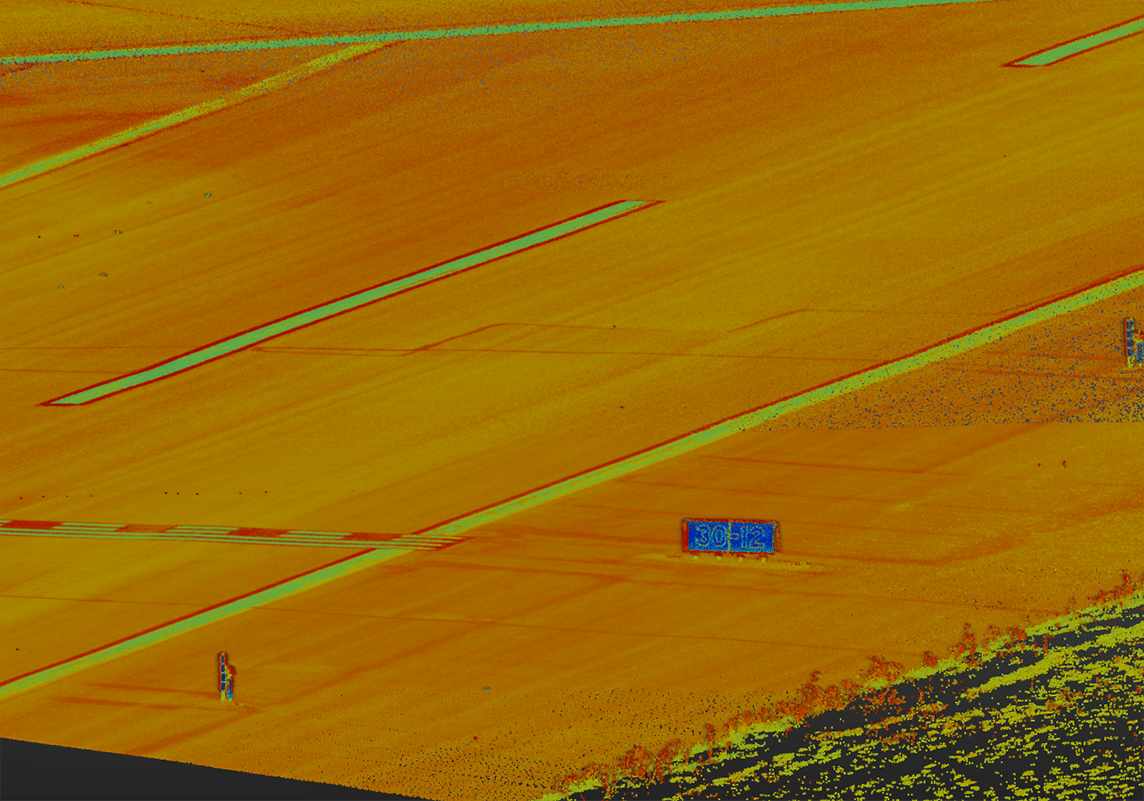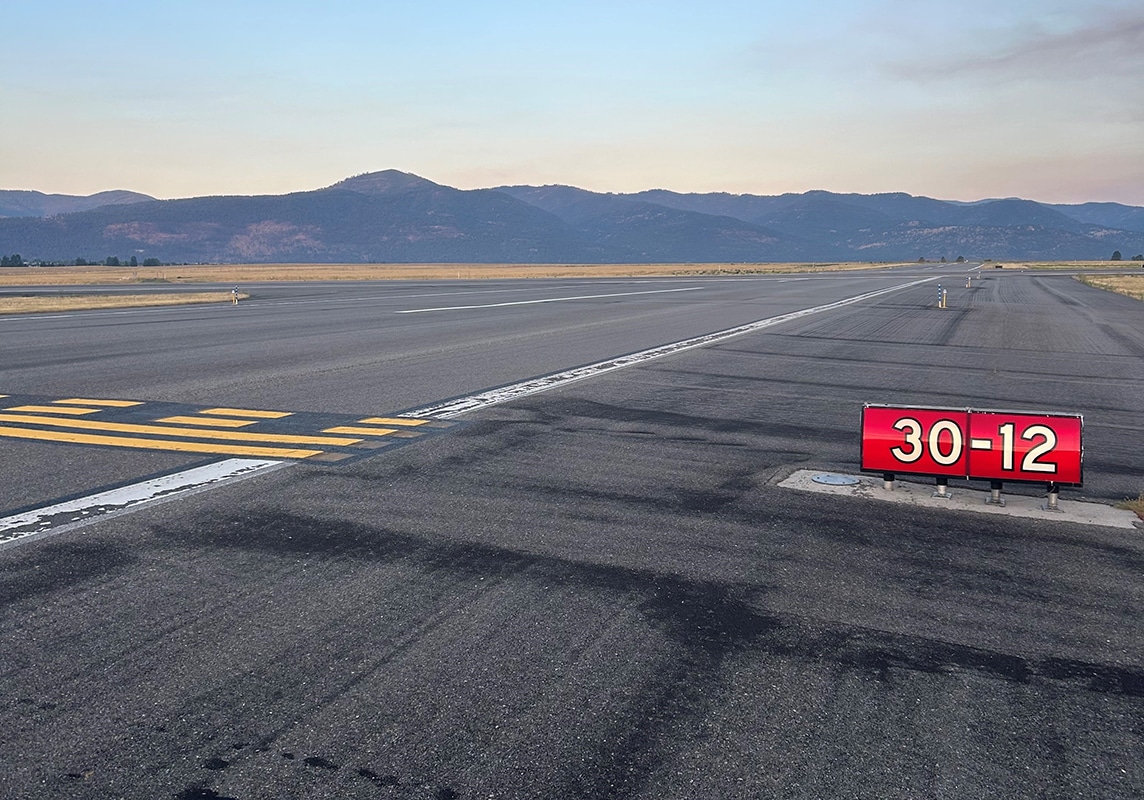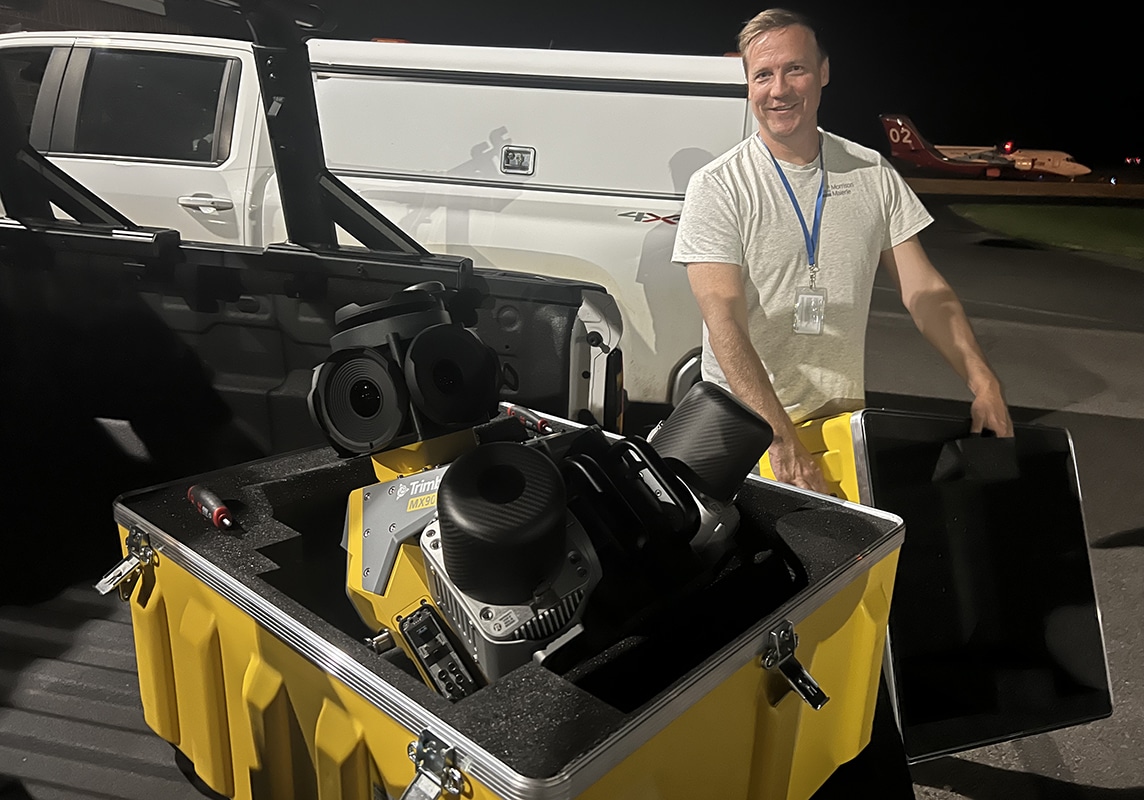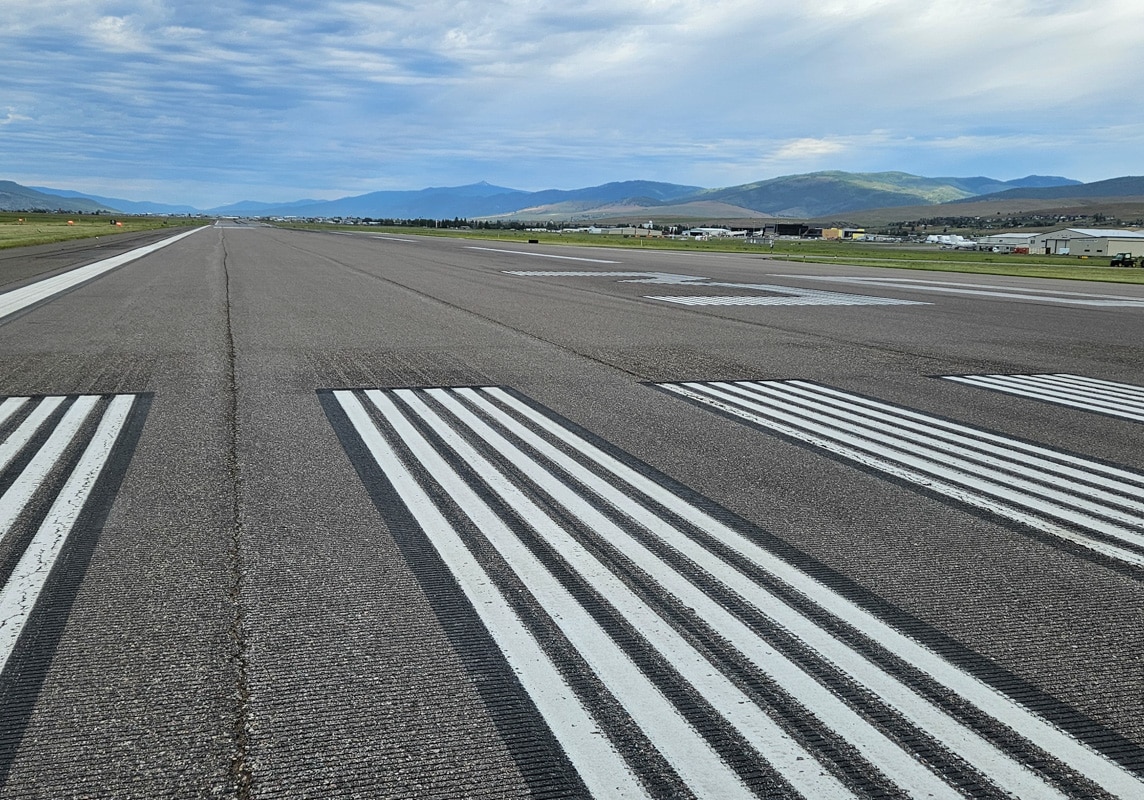
Missoula Airport Runway Rehab LiDAR Survey
LiDAR Scanning to Boost Efficiency
The Missoula Montana Airport hired Morrison-Maierle to complete a comprehensive survey to prepare for its upcoming runway maintenance project. The project for the 10,000 linear-foot runway involves milling and replacing the existing surface.
Traditionally, this type of survey relied on manual measurements taken at 25-foot intervals over several weeks, requiring extensive time and human resources. However, we wanted to incorporate a significantly more precise solution than traditional methods to increase accuracy and efficiency.
To achieve this, we used LiDAR technology that drastically reduced the actual survey time to just 45 minutes—a significant improvement over the weeks typically required.
The project involved 40 hours of prep work, during which we laid out 60 points with precise horizontal and vertical levels to tie the scan to the runway. We then mounted a large LiDAR instrument on the back of a truck. The machine is about the size of a car engine but weighs less. Once in place, we drove it down the runway three times at 30 mph, collecting 1 million data points per second from two heads. This method speeds up the process and provides a much denser and more accurate depiction of the runway surface.
Our key challenges included coordinating with airport schedules to minimize disruption, ensuring safety, and dealing with the high costs of renting the LiDAR unit (the equipment purchase price is over $1 million).
LiDAR offers vastly superior data quality, and the potential for significant cost savings will benefit future projects by reusing collected data. There are also critical safety advantages, including minimizing the time staff needs to be on the runway, which could be potentially dangerous.
This project meets immediate surveying needs and builds a valuable repository with topographic surface data for future endeavors. The project zone extends 400-500 ft. wide, far past what we needed for the pavement project. For example, if the airport wants to replace runway lights, the detailed LiDAR data would allow us to start on that project without surveying the area again.
-
Airport surveying
-
Differential leveling
-
GNSS
-
LiDAR
LiDAR Benefits
This project marks one of the first times someone has used LiDAR scanning on a Montana project. This advanced technology was particularly helpful in an airport setting where shutting down operations is challenging, and speed and efficiency are critical.
Using the LiDAR technology resulted in a scan with the highest level of accuracy. This will ultimately help the project go smoother and set the construction team up for success. They will have information to make more precise calculations and better understand paving costs.
Since the scans also capture detailed information on everything in the area—especially underground infrastructure—they can have a wide range of benefits for municipal and urban settings like sewer and water replacement projects.
Embracing LiDAR technology places Morrison-Maierle at the forefront of surveying innovation and underscores our commitment to staying ahead of rapidly evolving surveying technologies.
Because we collect such a high volume of raw data, we needed a system to compress it enough to be suitable for our average user’s computer. We used a series of programs to reduce the point cloud so it was usable in AutoCAD.
Since technology costs tend to diminish over time, early adoption of LiDAR scanning will allow us to potentially pass future cost savings on to our clients. Reduced labor time can also provide cost savings, particularly in areas like the Mountain West that can be hard to staff.


Scheduling and Security
As with any airport project, we needed to coordinate and work within the narrow windows without planes taking off or landing. We had to ensure that all necessary personnel were cleared using the airport security and badging process in addition to a national background check.
Using LiDAR technology on the Missoula Airport project improved safety outcomes and working conditions for project staff. As previously mentioned, the shortened on-site project time allowed project staff to spend less time on an active runway in a dangerous situation. We also needed less staff while we were on the site.
It was also important to keep planes running on their regular schedule, and we scheduled much of the work to occur at night and communicated with the tower and airport staff throughout the process.
Learn more about our surveying capabilities.
